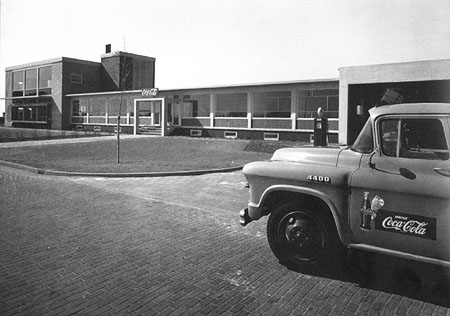
|
|
|
|
Dutch architecture and the American model
As part of the national 'Fiftieth Anniversary of the Marshall Plan Celebration' this exhibition will show how important America has been as a source of inspiration for Dutch architecture. Many American novelties, from the glass office boxes of the fifties to the shopping malls of the nineties, have been adopted with much enthusiasm in the Netherlands. Often they have become such familiar features that people have stopped realizing that the supermarket, the motel and the bowling alley are American in origin. In the NAI Upper Room models, photos, drawings and films of old and new 'American' buildings will be on show.
The American influence
There is no other country which affected Dutch architecture more these past fifty years than the US. For decades America has been one of the major sources of inspiration for the 'latest thing' in architecture. Since the fifties American architects have been active in the Netherlands occasionally, like Marcel Breuer who designed the Rotterdam Bijenkorf department store building and the American embassy in The Hague. These past few years there has been a true invasion. There is not a single important American architect who has not made designs here. The General Bank at the Rotterdam Blaak, the office tower designed by the American architect Helmut Jahn, is a perfect example.
Marshall aid
The American contribution to the liberation and the Marshall aid given from 1948 created the foundation for a close relationship between the Netherlands and the United States. More then ever before did the US start to play a leading role internationally, both politically/economically and culturally. The Marshall aid given to the Netherlands, amounting to 3.9 billion Dutch guilders between 1948 and 1953, was a substantial contribution to the economic recovery of the Netherlands. Many building projects were funded with Marshall dollars. In addition to monetary aid technical support was also part of the Marshall plan.
Vision of the future
After the Second World War the US were very much in the lead, economically speaking, a leading position revealing itself in unparallelled wealth. Many Dutch people thought that in America the future had materialized, the future which lay in store for our country, if things went better over here. This partly proved to be true. With the growing prosperity many novelties were introduced in the fifties and sixties, novelties which had become quite common in America, like self-service shops and supermarkets, motels and - on a smaller scale - household appliances like TV-sets, refrigerators, washing machines and all kinds of other wire-and-plug-appliances. In the seventies there was a strong decrease of interest in the US, partly because of the anti-American mood, created by the war in Vietnam and Watergate. At the end of the decade America was to be re-discovered. Again American architects started to set the trend, highrise buildings became very popular in the Netherlands and Rotterdam even had a skyline of American grandeur. These past few years the Netherlands have once again adopted a number of phenomena which had been around in the US for quite some time, like the McDrive restaurants and suburban shopping malls. Their rise is not always directly linked to what happened in the US, but it underlines the correctness of the idea from the fifties, that in the US one could see the future of the Netherlands.
|
 |
It's New, Try It - Dutch architecture and the American model
|
|

